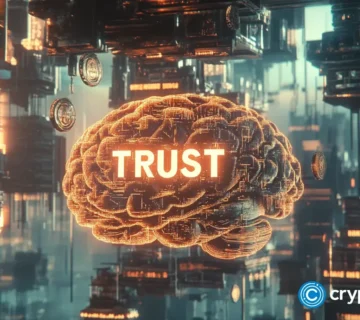Disclosure: The views and opinions expressed here belong solely to the author and do not represent the views and opinions of crypto.news’ editorial.
The debate over graphics processing horsepower is old news. Those who succeed in the future will be those who master where data resides. As global data creation continues to explode, lagging firms will be left locked out of the next stage of innovation.
Summary
- Data volumes are exploding, with global creation projected to surpass 200 zettabytes by end-2025, more than all prior human output combined.
- Centralized cloud storage is the AI bottleneck, inflating costs by up to 80% with egress fees and slowing large-scale data transfers to days.
- Decentralized storage networks offer a fix, sharding data across independent nodes and embedding cryptographic proofs for compliance-ready audit trails.
- Regulation like the EU AI Act raises the stakes, forcing provable data provenance—making storage a strategic priority, not a background utility.
Data creation is projected to crest 200 zettabytes worldwide by the end of 2025; that’s enough to stream every film ever made more than 100 billion times. This estimate involves more digital matter than humankind has generated in every prior year combined.
In tandem with this surge, research teams have revealed the first publicly released trillion-parameter language model. This behemoth model, whose training corpus alone would have filled entire national archives ten years ago, is an example of such a Leviathan that consumes petabytes an hour.
Without storage pipelines that can ingest, stage, and stream data at these newfound scales, even the fastest processors will suffer in idle frustration.
Centralized clouds are the new bottleneck
Most organizations sti
Go to Source to See Full Article
Author: Guest Post








